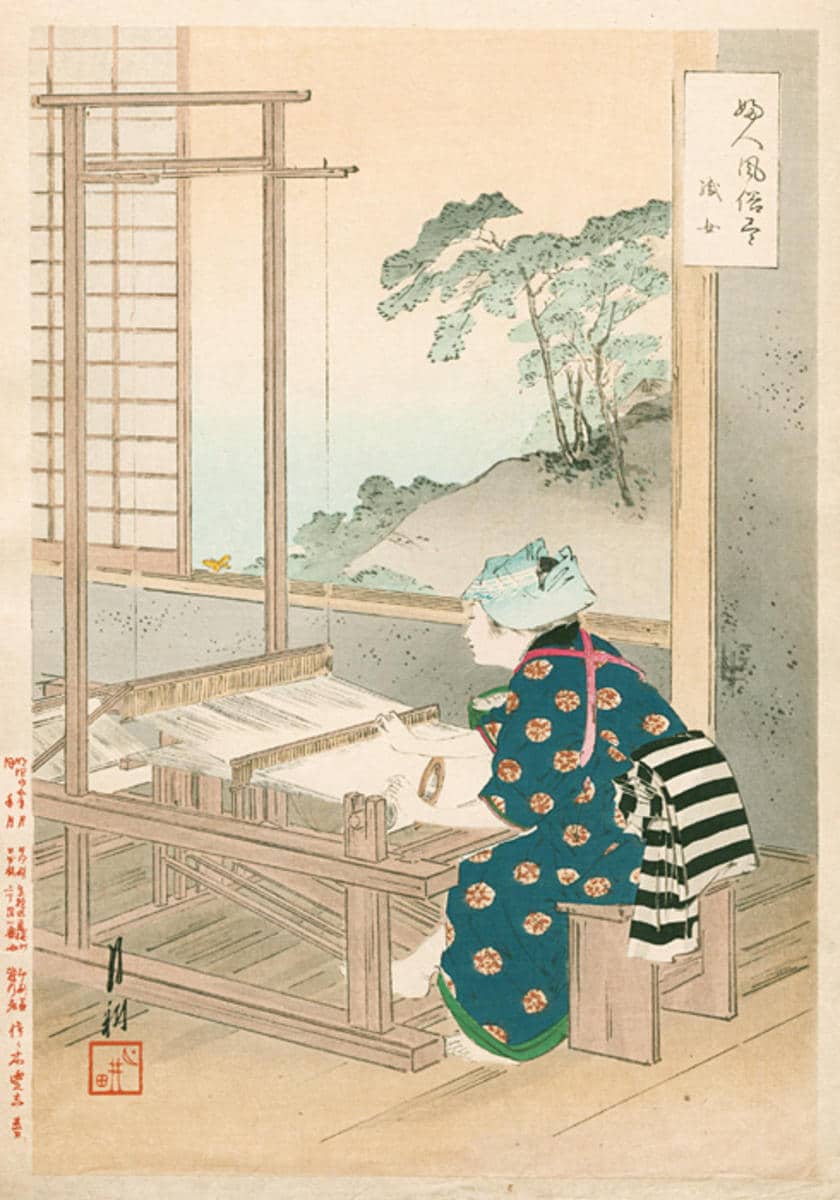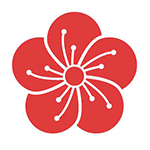Have you ever run your fingers across a fabric so light and silky that it seems to float between your hands? That’s the magic of Japanese cotton lawn – a fabric that combines the comfort of cotton with an almost ethereal delicacy. As someone who has spent years exploring Japanese textiles treasures, I’m excited to share this gorgeous material with you!
Key Takeaways
Before we dive into the wonderful world of lawn fabric, here’s what you’ll discover:
- The fascinating history behind this exquisite Japanese fabric and why it’s called “lawn”
- What makes Japanese cotton lawn different from other lightweight cottons
- The remarkable properties that make it perfect for summer clothing
- How to care for your cotton lawn garments to keep them looking beautiful
- Creative projects that showcase this fabric’s versatility
- Why Japanese cotton has become a favorite among designers and sewists worldwide
What Is Japanese Cotton Lawn? A Touch of History
Japanese cotton lawn is like the whisper of fabric – incredibly lightweight with a fine, tight weave and a smooth finish that feels almost like silk against your skin. But did you know the term “lawn” has nothing to do with grass? It actually comes from Laon, a city in France where this fine plain-weave fabric was first created (though originally in linen)!
When cotton arrived in Japan around the 16th century, it revolutionized clothing for everyday people. By the Edo period (1600-1868), cotton cultivation was flourishing, and small cottage industries were creating beautiful woven textiles. What a relief it must have been to switch from coarse hemp fabrics to soft, breathable cotton in Japan’s humid summers!
The story of Japanese cotton is truly a meeting of East and West – combining the French tradition of fine-weave “lawn” with Japan’s meticulous approach to textile craftsmanship. By the early 20th century, Japan had become a major exporter of premium cotton textiles, and their reputation for quality continues to this day.
Summary
Japanese cotton lawn combines French origins (from Laon) with Japanese craftsmanship, revolutionizing Edo period clothing and becoming Japan’s premium textile export by the early 20th century.
What Makes Japanese Cotton Lawn Special?
Have you ever wondered why some fabrics just feel more luxurious than others? With Japanese cotton lawn, it’s all in the details:
The Feel: Oh my goodness, the softness! Made from fine, high-thread-count yarns (typically 150-200 threads per inch), cotton lawn has an incredible hand-feel that’s both silky and feather-light. Many Japanese lawns are made with combed cotton (where short fibers are removed) and often mercerized, giving the fabric a subtle sheen that catches the light beautifully.
The Weave: Despite being so light, lawn fabric is surprisingly durable thanks to its tight, balanced plain weave. It’s typically opaque or just slightly sheer, with a crisp drape that can hold shape in ruffles or gathers without feeling stiff. This makes it perfect for those delicate summer blouses or dresses where you want movement without weight.
The Breathability: If you’ve ever spent a summer in Japan, you know how important breathable clothing is! Japanese lawn fabric excels here – it allows air to flow through freely, making it ideal for warm weather wear. I still remember my first trip to a summer matsuri (festival) in Tokyo, where I was so grateful for my cotton lawn yukata-inspired dress!
Summary
This fabric’s remarkable softness comes from high thread count (150-200 per inch), mercerization, and meticulous weaving, creating a lightweight yet durable material with a silky feel and elegant drape perfect for summer wear.
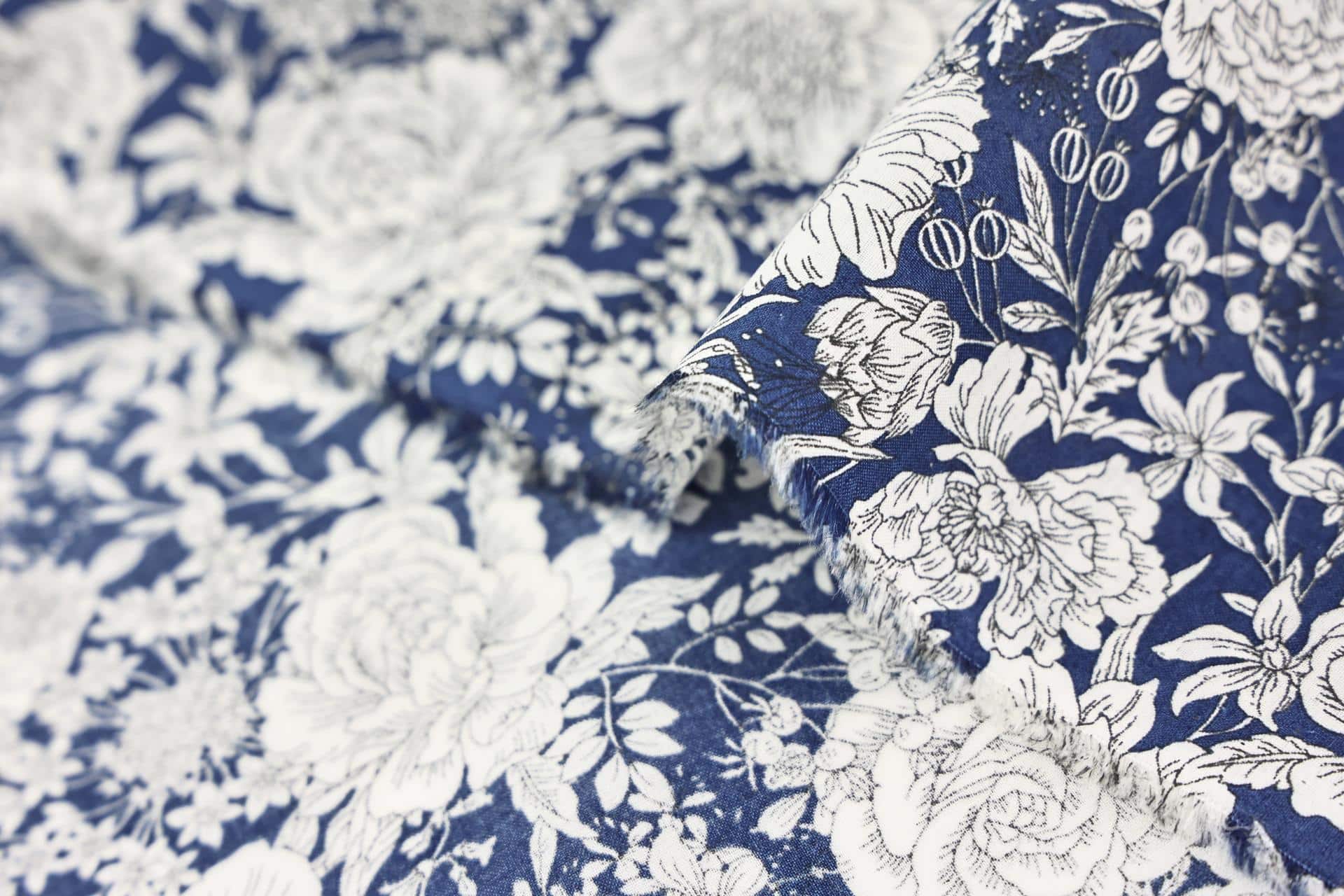
How Does It Compare to Other Fabrics?
When shopping for lightweight cottons, you might come across terms like voile, poplin, or muslin. Let’s see how Japanese cotton lawn stacks up:
Lawn vs. Voile: Think of voile as lawn’s more sheer cousin. While voile (French for “veil”) is gauzier and more translucent, cotton lawn offers more coverage while still feeling airy. You can often wear a lawn fabric blouse without a lining – try that with voile!
Lawn vs. Poplin: Poplin (also called broadcloth) has a subtle rib texture and is more structured. It’s great for shirts and pants, but lacks the silky drape of cotton lawn. As my sewing teacher once said, “Poplin stands at attention, while lawn dances in the breeze.”
Lawn vs. Muslin/Batiste: Muslin typically has a looser weave and slightly fuzzy texture, whereas Japanese cotton lawn boasts an ultra-fine, polished feel. It’s like comparing casual cotton to dressed-up cotton – both nice, but lawn has that special refinement.
One of the most striking qualities of Japanese cotton lawn is how beautifully it showcases prints. The high thread count creates a smooth canvas for intricate designs, from delicate florals to bold artistic patterns. The colors appear vibrant and precise, without bleeding or fuzziness. This is why prints from Japanese manufacturers like Kokka, Nani Iro, and Echino have developed such devoted followings among sewists!
Summary
Japanese cotton lawn balances coverage and airiness better than sheer voile or structured poplin, displaying vibrant prints with exceptional clarity and offering more refinement than casual muslin.
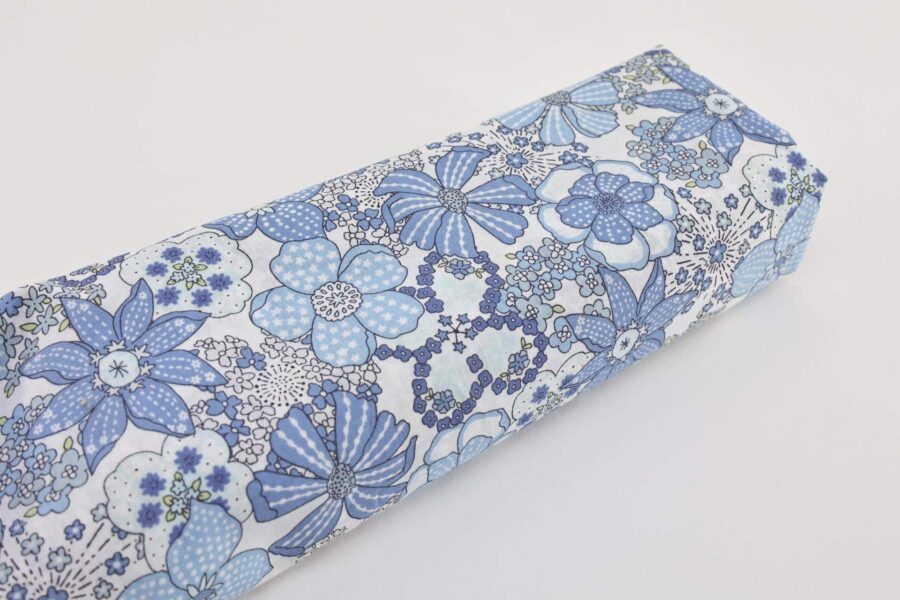
Japanese cotton lawn fabric – Blue pastel blooming garden
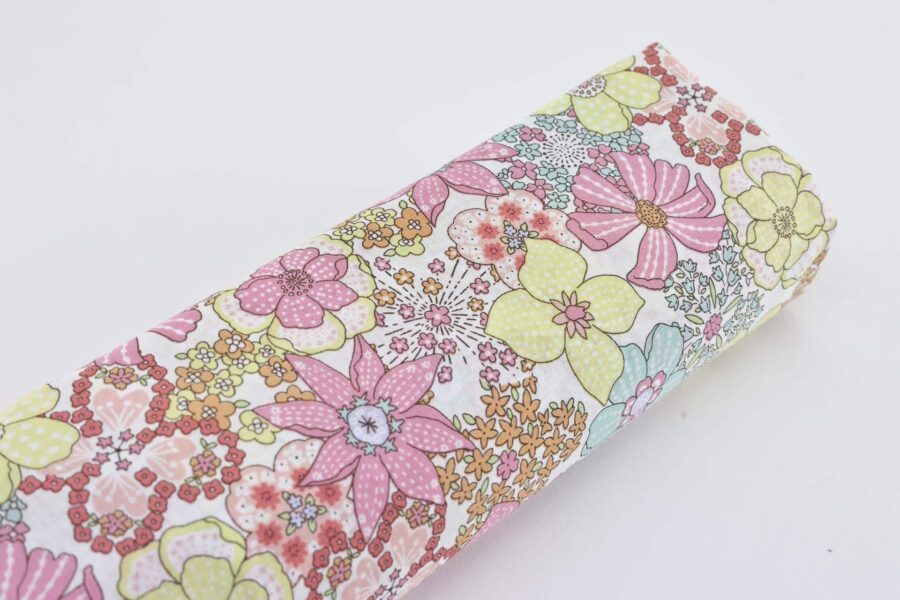
Japanese cotton lawn fabric – Pink pastel blooming garden
How Is It Made? The Art of Fine Cotton
The exceptional quality of Japanese cotton lawn begins with the raw materials. Mills often use premium long-staple cotton varieties (like pima) that are combed to remove short fibers, resulting in smoother, stronger yarns.
These fine yarns are then woven into that characteristic tight, even surface – typically with around 80 warp ends and 80 weft picks per inch. While traditional Japanese fabrics might have been handwoven, modern mills employ advanced machinery to achieve superb fineness and uniformity.
After weaving, most cotton lawn fabric undergoes finishing processes that enhance its special qualities. Many Japanese lawns are mercerized – a treatment that swells the fibers, increasing luster, dye uptake, and strength. The result is that “impossibly smooth and soft hand” that makes you want to rub the fabric against your cheek!
Quality control is paramount in Japanese mills, where attention to detail ensures the thread count and finish meet exact standards. I once visited a textile factory in Japan where they inspected each meter of fine cotton lawn by hand before it left the facility – how’s that for dedication to craft?
Summary
Premium long-staple fibers undergo careful combing, precision weaving, and mercerization, with Japanese mills enforcing rigorous quality control including hand inspection of each fabric meter.

What Can You Make With It?
Japanese cotton lawn is versatility embodied! Here are some popular uses:
Summer Clothing: This is where lawn fabric truly shines. Think flowy sundresses, elegant blouses, and lightweight skirts that feel cool and comfortable even on hot days. The fabric’s slight sheen and body ensure your garments look polished, not rumpled.
Children’s Wear: The softness of Japanese lawn makes it perfect for children’s clothing. I made my niece a cotton lawn dress with a floral pattern that’s become her favorite – “It doesn’t scratch, Auntie!” was her delighted review.
Quilting: Have you ever seen a cotton lawn quilt? They have a lovely soft hand and slight luster, giving a more luxurious feel compared to typical quilting cotton. They’re perfect for summer bedding or lightweight throws.
Accessories: From scarves to handkerchiefs, Japanese cotton creates accessories with a light, airy feel. A friend of mine makes the most beautiful cotton lawn scarves – they’re so light you barely know you’re wearing them, but they add the perfect finishing touch to an outfit.
In Japan, similar lightweight cottons have been used in traditional summer attire like yukata (casual summer kimonos) for centuries. There’s something special about connecting to this historical tradition while creating modern garments!
Summary
This versatile fabric creates beautiful sundresses, blouses, children’s wear, and summer quilts that feel as good as they look while providing exceptional comfort in warm weather.
The Cultural Significance
Cotton revolutionized clothing in Japan, making comfortable fabrics accessible to everyday people. Japanese cotton lawn, being particularly fine, became valued for summer garments when staying cool was essential.
Regional weaving traditions contribute to Japan’s reputation for quality cotton fabrics. For example, Banshu-ori from Hyōgo Prefecture has been produced since the late 18th century, using pre-dyed cotton yarns to create fabrics with vibrant, long-lasting colors.
These traditions have influenced modern production methods. When you purchase Japanese cotton lawn today, you’re benefiting from generations of textile expertise – from samurai-era weavers to contemporary manufacturers using state-of-the-art technology.
In the fashion world, Japanese cotton carries significant prestige. Many high-end designers specifically seek out Japanese lawn fabric for their collections, advertising this origin as a mark of quality. Artists like Naomi Ito create stunning textile lines like Nani Iro that have cult followings worldwide.
But what does this mean for you? When you make or wear something from Japanese cotton lawn, you’re connecting to this rich heritage of craftsmanship. There’s something deeply satisfying about creating with materials that have been perfected over generations, don’t you think?
Summary
Japanese cotton transformed clothing accessibility, with traditions like Banshu-ori building Japan’s textile reputation and brands like Nani Iro and Kokka continuing this heritage of craftsmanship.

Caring For Your Cotton Lawn Treasures
Taking care of your Japanese cotton lawn pieces is surprisingly easy! Here’s how to keep them looking beautiful:
Washing: Use a mild detergent and cool to warm water (30-40°C). A gentle machine cycle works well, though a mesh laundry bag offers extra protection for delicate items. Avoid harsh bleach, which can weaken fibers and fade those beautiful prints.
Drying: Line dry or lay flat is ideal – cotton lawn dries quickly due to its lightweight nature. If using a dryer, choose a low heat setting and remove while slightly damp to prevent deep wrinkles.
Ironing: Japanese cotton presses beautifully with a warm iron (medium to cotton setting). I like to iron on the reverse side if the fabric is printed, just to be safe. A bit of steam helps smooth out stubborn creases, though mercerized lawns often resist wrinkling naturally.
Storage: Store your lawn fabric items clean and dry, folded in a drawer or on a shelf away from direct light. For hanging items, use padded hangers to prevent shoulder marks.
With proper care, your Japanese cotton lawn garments will just get better with time – softening further without losing their structure. Isn’t it wonderful when beautiful things are also practical?
Summary
Simple care (gentle washing, low-heat drying, careful pressing) maintains these garments, which actually improve with age as they soften while maintaining their structure.
Sustainability Matters
Many Japanese textile manufacturers maintain high environmental standards that align with Japan’s cultural respect for nature and resources. The tradition of quality craftsmanship inherently promotes sustainability through creating fabrics designed to last, reducing the cycle of disposable fashion.
The careful production methods and attention to detail characteristic of Japanese textiles mean your cotton lawn pieces will have exceptional longevity, allowing you to create garments that can be treasured for years rather than discarded after a season. This longevity represents a form of sustainability that’s been practiced in Japan for centuries.
When shopping for Japanese fabric, consider how its superior quality contributes to a more sustainable wardrobe or home through fewer replacements and enduring beauty. The thoughtful production and inherent durability of these premium textiles offer both practical and environmental benefits that make your creative projects more meaningful.
Summary
Many Japanese mills prioritize environmental responsibility through sustainable initiatives, with the inherent quality and longevity of these fabrics making them a conscientious choice.

Japanese lawn cotton in Liberty style light blue 1M

Japanese lawn cotton in Liberty style yellow 1M
Is Japanese Cotton Lawn Right For Your Next Project?
I’ve shared a lot about this wonderful fabric, but you might be wondering: is it right for me? Here are some final thoughts:
Choose cotton lawn if you want:
- A lightweight fabric with a luxurious feel
- Something breathable for warm weather
- A fabric that takes prints beautifully
- Material that drapes softly but still has some structure
- Something that’s a joy to sew and wear
If you’re planning your next sewing project, consider the gentle elegance of Japanese cotton lawn. From the first touch of the fabric to the final wear of your creation, it’s an experience in textile luxury that connects you to centuries of craftsmanship.
Summary
Japanese cotton lawn brings unmatched refinement through its lightweight luxury, breathability, and beautiful drape, connecting your creations to centuries of craftsmanship.
What will you create with this remarkable fabric? A flowing summer dress? A special quilt? Or perhaps a blouse that feels like wearing a cloud? Whatever you choose, Japanese cotton lawn brings a touch of refined softness to everything it becomes.
Have you worked with Japanese cotton lawn before? What did you make with it? I’d love to hear about your experiences with this extraordinary fabric!


